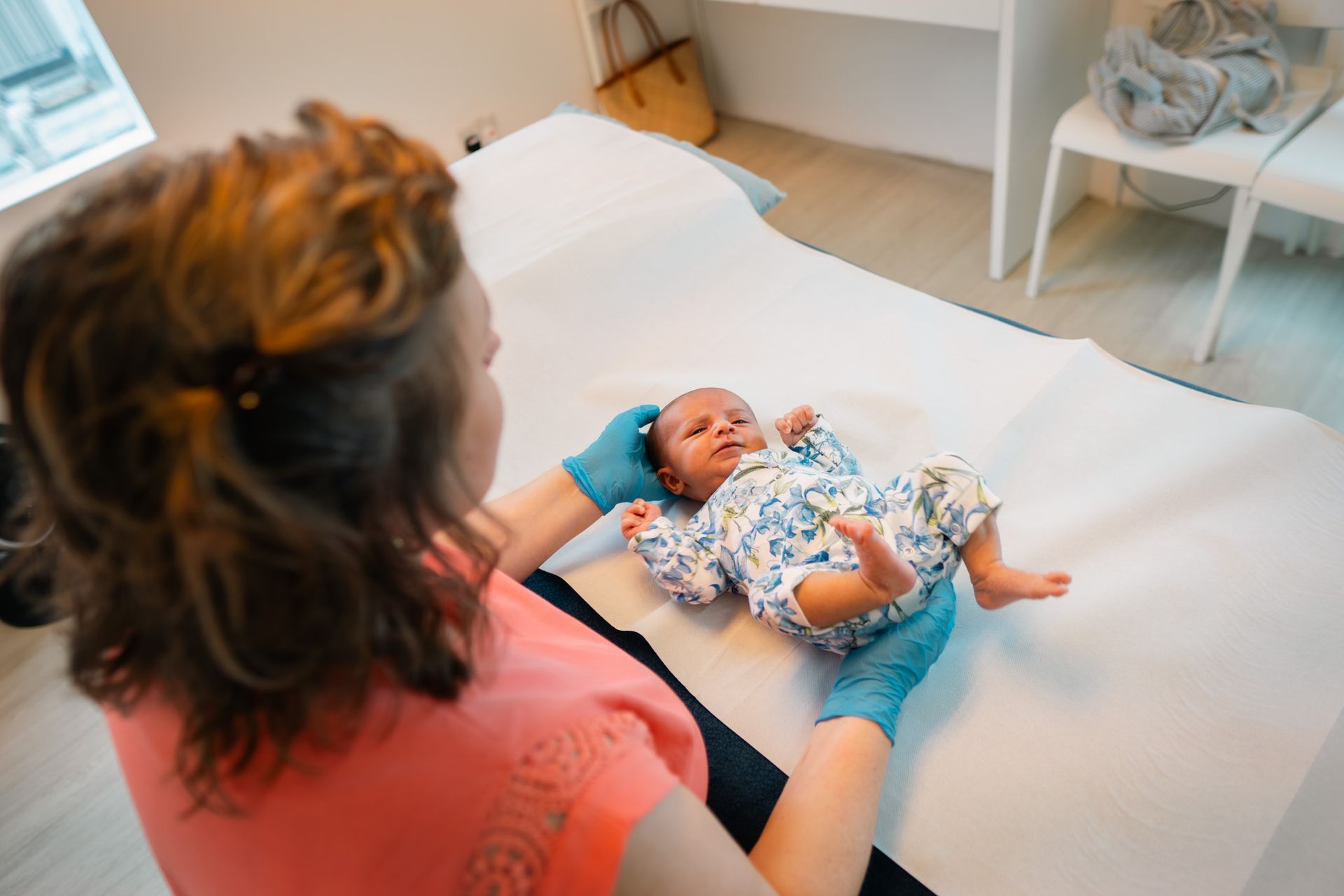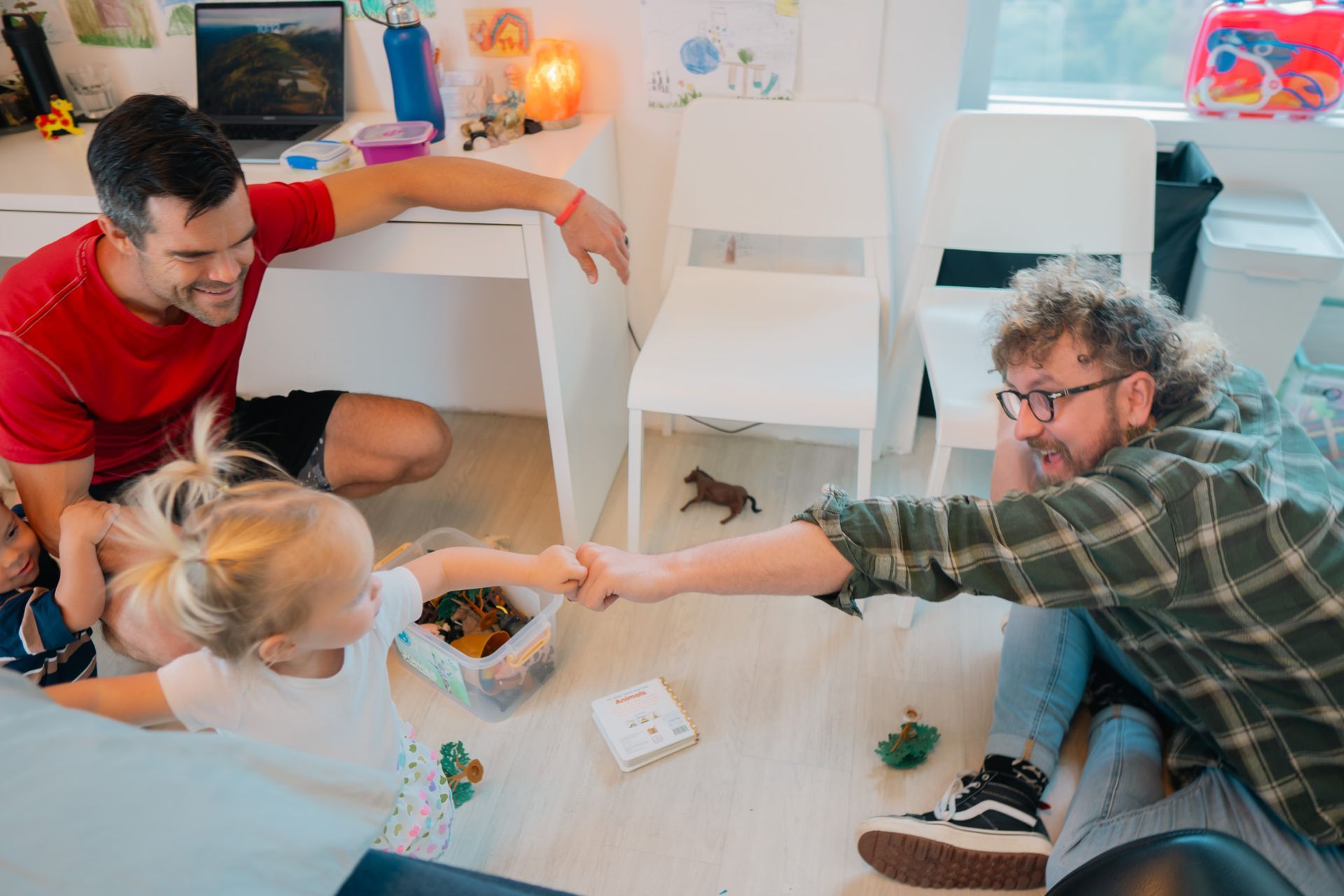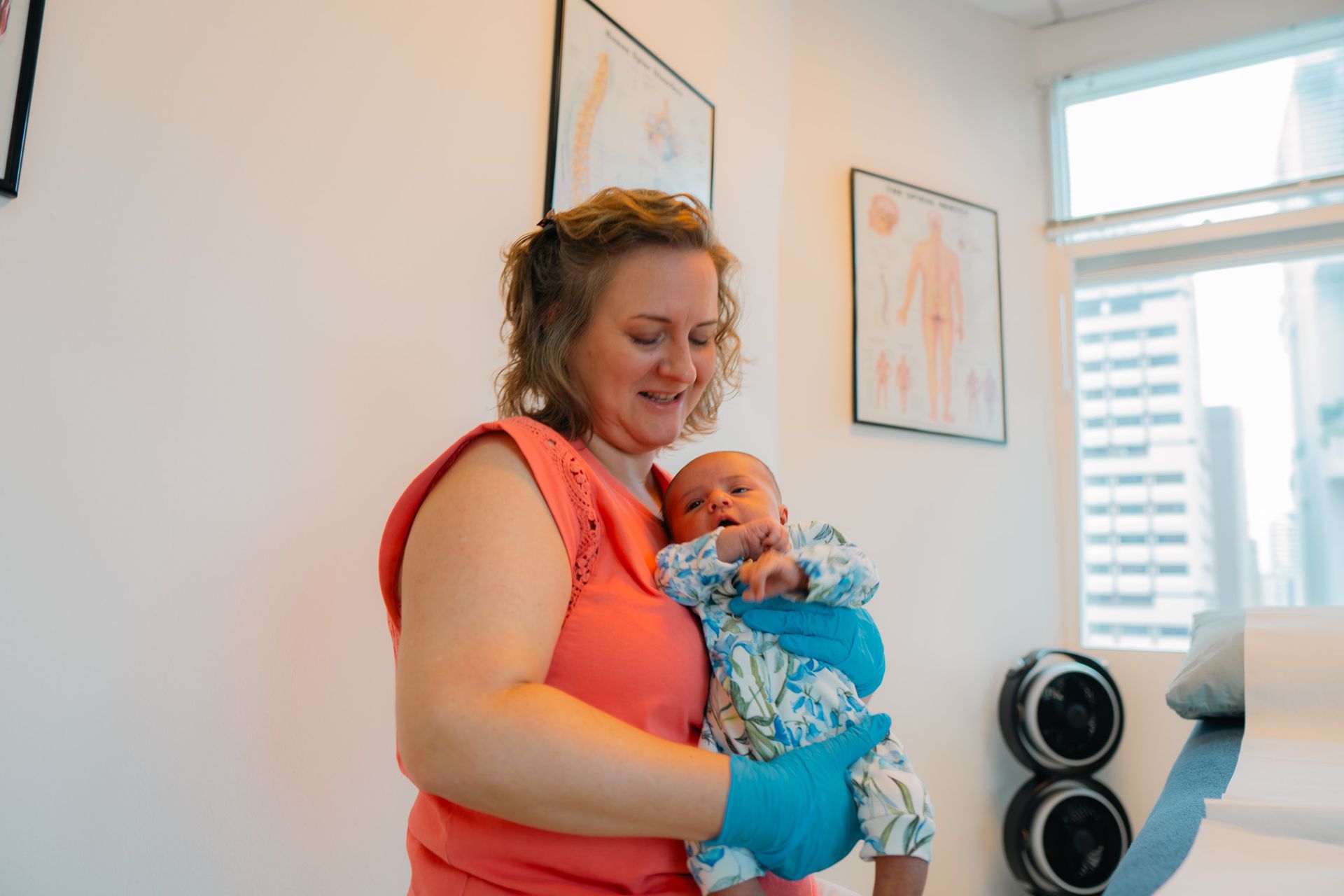
How Osteopathy can help Babies & Toddlers
with Edge Healthcare
September 2024
James Rowland, Bryan Lane, and Camilla Oats are highly experienced pediatric osteopaths at Edge Healthcare. With extensive training and expertise in treating babies and children, they specialise in providing gentle, effective osteopathic care tailored to support early development and address a range of common childhood conditions.
Osteopathy can play a crucial role in supporting the healthy development of babies, particularly during their early months, when their bodies are rapidly growing and adjusting to life outside the womb. Gentle and non-invasive, osteopathy offers a way to alleviate various physical strains that babies may experience during pregnancy, birth, and early infancy.
How Osteopathy Helps Babies
The process of birth, while natural, can place significant pressure on a baby’s body. In both vaginal births and cesarean sections, the baby may experience physical stress from the journey through the birth canal, compression of the head, or tension in the neck and spine. For some babies, these pressures can result in musculoskeletal imbalances, which may contribute to symptoms such as excessive crying, digestive problems, or difficulties with feeding and sleeping.
Osteopaths trained in pediatrics care use very gentle, hands-on techniques to assess and treat these issues. By applying subtle pressure to specific areas, osteopaths aim to release tension in the baby’s muscles, bones, and connective tissues, restoring balance and alignment in the body. This holistic approach not only helps relieve discomfort but also supports the body's natural ability to heal and regulate itself.
Craniosacral Therapy in Paediatric Osteopathy
One of the most commonly used techniques in pediatrics osteopathy is craniosacral therapy, which focuses on the soft tissues around the baby’s head and spine. Since a baby’s skull is soft and flexible in the early months, craniosacral therapy can gently adjust any misalignments or tension in this area that may have occurred during birth.
For example, babies may develop a preference for turning their head to one side, which can lead to flattening on one part of the head (plagiocephaly) or tightness in the neck (torticollis). Craniosacral therapy helps by gently releasing tension in the neck and cranial bones, promoting symmetry and allowing the head to return to its natural shape.
This gentle, hands-on therapy can also support the development of the central nervous system, encouraging relaxation and aiding in the regulation of the baby’s sleep and digestion. Many parents report that after osteopathic treatment, their babies sleep more soundly, are less fussy, and show improvements in feeding and digestion.
Common Conditions Treated with Paediatric Osteopathy
Colic is a common condition that osteopathy can help alleviate. Colic refers to episodes of intense, frequent crying in otherwise healthy infants. While the exact cause of colic is not well understood, it is often linked to digestive discomfort, gas, or musculoskeletal tension. Osteopaths work to relieve this tension, particularly in the abdominal area, and help improve the baby’s ability to process food, reducing discomfort.
Reflux (gastroesophageal reflux) is another condition that osteopathy can help manage. Babies with reflux frequently spit up or vomit after feeding, often due to the underdevelopment of the lower oesophageal sphincter, which allows stomach contents to flow back into the oesophagus. Osteopaths use gentle manipulations to improve the baby’s posture and alignment, which can reduce pressure on the digestive system, helping to alleviate reflux symptoms.
Feeding difficulties are another area where osteopathy can be beneficial. Some babies struggle to latch or feed properly, which may be due to tension or misalignment in the head, neck, or jaw following birth. By releasing this tension, osteopaths can help improve the baby’s ability to feed, whether they are breastfeeding or bottle-feeding.
Plagiocephaly (flat head syndrome) is often caused by a baby lying in one position for extended periods, leading to flattening on one side of the head. Osteopathic treatment can help relieve any underlying musculoskeletal imbalances contributing to the issue, encouraging more natural head movements and reducing the likelihood of the condition becoming permanent.
Torticollis, a condition in which a baby has tight muscles in the neck and prefers to turn their head to one side, can also be treated with osteopathy. By gently releasing the tension in the neck muscles, osteopaths can help the baby achieve more balanced head movements, which in turn supports healthy overall development.

The Benefits of Early Intervention
By addressing these early physical imbalances, osteopathy can have a long-lasting positive impact on a baby’s health and development. Early treatment can prevent these issues from becoming more severe as the baby grows, potentially avoiding the need for more invasive treatments later on. Babies treated with osteopathy often show improvements in their overall behaviour, sleep, and physical comfort, which can also provide relief for parents.
Osteopathy takes a holistic approach to treatment, recognising that the body’s systems are interconnected. By focusing on releasing tension and promoting balance, osteopaths can help support the baby’s natural growth and development, setting the stage for a healthier, more comfortable start in life.
To book a consultation, please reach out to Edge Healthcare

Contact us here:
IG: @edgehealthcaresg
FB: Edge Healthcare
#osteopathy #physiotherpapy #womenshealth #sgmoms #backpainrelief #sghealth #fitnesssg#sgrunners #movementtherapy #healthyliving #postnatalcare
